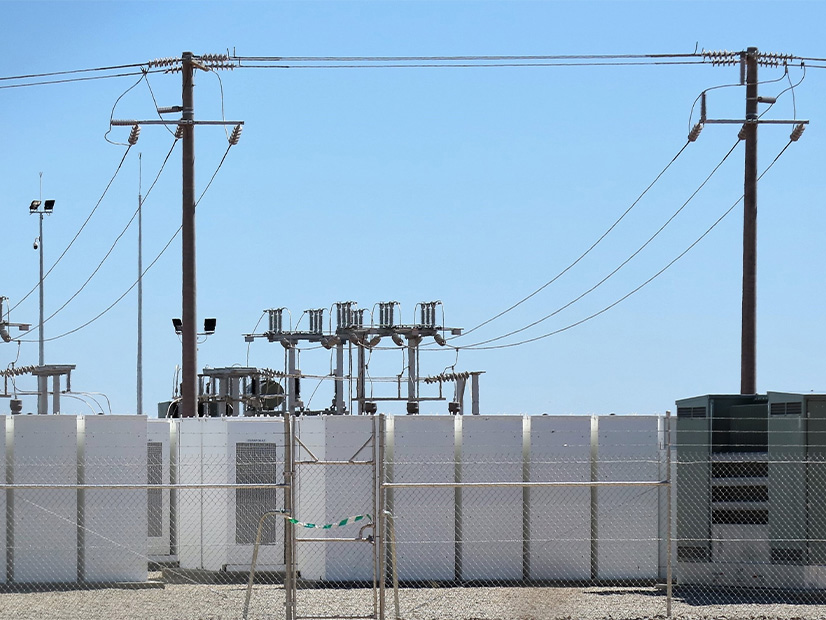
A white paper on a pressing matter — managing battery systems connected to the grid — bogged down in a debate over its details as NERC’s Reliability and Security Technical Committee (RSTC) met Wednesday.
A request for approval of “Grid Forming Functional Specifications for BPS-Connected Battery Energy Storage Systems” was tabled to allow time to seek industry comment and potentially rework the report.
It was the only matter on the 27-item agenda that drew any votes of opposition.
Shortly before the vote, RSTC Chair Greg Ford said the subject is important but that getting the report correct is important as well.
“As a matter of fact, it’s probably one of the more important documents we’ve talked about in a while as we move this grid transformation and this whole idea of bringing batteries into the fold of dispatch,” he said.
“We’re trying to make this paper as solid and informative as we can so that we can allow it to take us to the next steps, whether that be guidelines or SARs [standards authorization requests] in the future, depending on how batteries come into play.”
The debate and discussion touched on the input the Inverter-Based Resource Performance Subcommittee sought as it wrote the white paper — one speaker said he saw no NERC-registered entities on the list — but centered more on the wording of the report, which some felt was too strong.
Growing Need
The version of the white paper before the committee Wednesday states that:
Studies have shown that absent supplemental synchronous machine-based solutions, grids dominated by inverter-based resources (IBRs) need grid-forming (GFM) IBRs to maintain stable operation.
Accordingly, the need for GFM technology is expected to accelerate with the rapid growth of IBRs, and planning is necessary to ensure sufficient GFM IBRs are installed.
One of the largest obstacles to installing GFM on the bulk power system (BPS) is establishing clear interconnection requirements for the performance, testing and validation of the technology.
So, the paper addresses how transmission owners, planners and coordinators can establish these requirements and test interconnecting resources.
It gives generator owners clear performance expectations for GFM resource interconnections so they can work with manufacturers before interconnection studies begin and possibly streamline the interconnection queue process.
A common question among industry stakeholders is how many IBRs should be deployed with GFM functionality; there is not a single answer, but initial studies indicate upward of 30% may be necessary.
Since the current percentage is near zero in nearly all large, interconnected power systems, the paper recommends starting to require and enable GFM in all future battery energy storage systems (BESS), a relatively low-cost step to ensure system stability.
Industry should begin specifying, requiring and implementing GFM for all new BPS-connected BESS.
Sticking Points
Words like “requiring” and “should” were problematic for some at the meeting.
“I think in this white paper, if it was just providing the technical recommendations on the specifications, I think I would let it go,” one speaker said. “But this is going further and it’s recommending that you ‘shall,’ in all battery storage applications, install grid-forming and enable it. That’s quite a strong statement to make without having industry comment.”
Ford agreed on the power of words, saying that “should be doing” and “should be considering” are different things.
Others emphasized the importance of the issue beneath the semantic debate.
“This is critical for reliability, the work that y’all are doing, and this paper is really important,” another attendee said. “Bringing the grid-forming characteristics to the surface is pretty important because we can’t wait till we need it to start thinking about getting it, because it’s too darn late at that point.”
Another said: “This is something this group asked for. We’ve been talking about it for three years. Our interconnection queue is getting tremendously bogged down with battery storage. … We are always struggling on this. Any delay is not going to do us much of a service, quite honestly.”
Another sought to reverse-engineer a solution to the debate, asking: “What are we trying to achieve here with this white paper?”
“The goal is to provide some guidance to utilities in areas that are already … considering grid-forming today,” subcommittee Chair Julia Matevosyan said.
Another speaker said he saw a wide leap in functionality between a white paper offering helpful ideas and one leading to SAR that “sets off bells and whistles of importance.”
“There ought to be a way to distinguish between the two,” he added.
Matevosyan did her best.
“If I may, I would just like to reiterate that this is just a white paper, there is no talk of SAR,” she said.
Wednesday’s vote pushes any RSTC action on the white paper back at least until the group’s September meeting.
“That was — fun,” Ford said as he called a recess, closing the matter after more than an hour of discussion.
